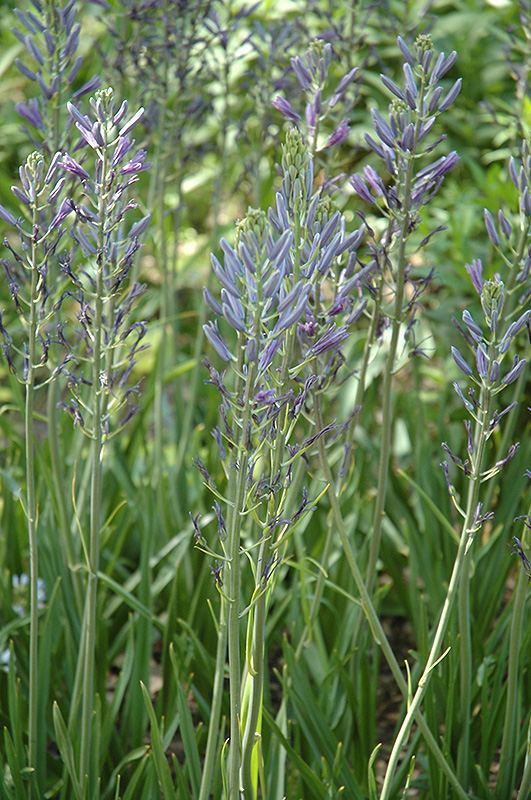Blue Camassia
Description
Clusters of narrow, green foliage give way to tall upright spikes of lovely lavender-blue star-shaped flowers; a beautiful spring blooming addition to patio containers, beds and borders
Landscape Attributes
Blue Camassia is an open herbaceous perennial with tall flower stalks held atop a low mound of foliage. It brings an extremely fine and delicate texture to the garden composition and should be used to full effect.
Blue Camassia is recommended for the following landscape applications;
Planting & Growing
Blue Camassia will grow to be about 18 inches tall at maturity extending to 32 inches tall with the flowers, with a spread of 8 inches. It grows at a medium rate, and under ideal conditions can be expected to live for approximately 6 years. As an herbaceous perennial, this plant will usually die back to the crown each winter, and will regrow from the base each spring. Be careful not to disturb the crown in late winter when it may not be readily seen! As this plant tends to go dormant in summer, it is best interplanted with late-season bloomers to hide the dying foliage.
This plant should only be grown in full sunlight. It prefers to grow in average to moist conditions, and shouldn't be allowed to dry out. It is particular about its soil conditions, with a strong preference for clay, alkaline soils, and is able to handle environmental salt. It is somewhat tolerant of urban pollution. This is a selection of a native North American species. It can be propagated by multiplication of the underground bulbs; however, as a cultivated variety, be aware that it may be subject to certain restrictions or prohibitions on propagation.
Blue Camassia is a fine choice for the garden, but it is also a good selection for planting in outdoor pots and containers. With its upright habit of growth, it is best suited for use as a 'thriller' in the 'spiller-thriller-filler' container combination; plant it near the center of the pot, surrounded by smaller plants and those that spill over the edges. Note that when growing plants in outdoor containers and baskets, they may require more frequent waterings than they would in the yard or garden.

